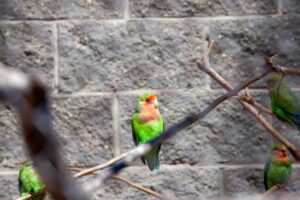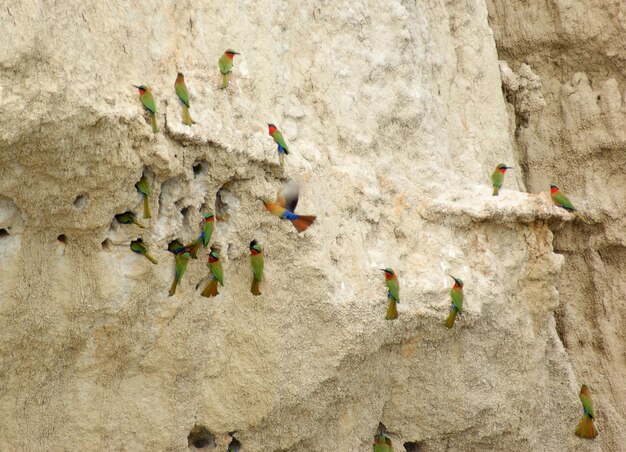Few creatures capture the imagination quite like the spotted tadley. This fascinating amphibian, often overlooked in discussions about biodiversity, plays a crucial role in its ecosystem. In this article, we will explore the characteristics, habitat, behavior, and conservation status of the spotted tadley, as well as its significance in the broader context of environmental health.
What is a Spotted Tadley?
The spotted tadley, scientifically known as Rana maculata, is a unique species of frog that is primarily found in specific regions of the world. Its name derives from the distinctive spots that adorn its skin, providing it with a remarkable appearance that sets it apart from other amphibians. These spots can vary in color and size, often serving as a form of camouflage against predators.
Physical Characteristics
The spotted tadley typically measures between 2 to 4 inches in length, with males being slightly smaller than females. Its skin is smooth and moist, a characteristic common to many amphibians. The coloration of the spotted tadley can range from shades of green to brown, with the spots being darker or lighter depending on the individual. This variation not only aids in camouflage but also plays a role in attracting mates during the breeding season.
Habitat
Spotted tadleys are primarily found in freshwater environments, such as ponds, marshes, and slow-moving streams. They thrive in areas with abundant vegetation, which provides both shelter and food. The presence of aquatic plants is crucial, as it offers breeding grounds and a place for tadpoles to develop safely.
These frogs are often found in temperate regions, where the climate supports their life cycle. They prefer areas with a mix of sun and shade, allowing them to regulate their body temperature effectively. During the dry season, spotted tadleys may burrow into the ground or seek refuge in moist areas to avoid desiccation.
Life Cycle of the Spotted Tadley
The life cycle of the spotted tadley is a fascinating process that begins with the mating season. Typically, this occurs in the spring when temperatures rise and rainfall increases. Males will call out to attract females, producing a series of croaks that resonate through their habitat.
Breeding
Once a female selects a mate, she will lay her eggs in water, often in clusters that can contain hundreds of eggs. These eggs are usually laid among aquatic plants, providing some protection from predators. The eggs hatch into tadpoles within a week or two, depending on water temperature and environmental conditions.

Tadpole Stage
Tadpoles are entirely aquatic and possess gills for breathing underwater. They feed on algae and plant matter, growing rapidly during this stage. As they mature, they undergo metamorphosis, developing legs and losing their tails. This transformation is a critical phase in their life cycle, allowing them to transition from an aquatic to a terrestrial lifestyle.
Adult Stage
Once the metamorphosis is complete, the young frogs emerge from the water and begin their life on land. Adult spotted tadleys are primarily nocturnal, foraging for insects and other small invertebrates during the night. They are known for their agility and can often be seen hopping through their habitat in search of food.
Behavior and Diet
Spotted tadleys are generally solitary creatures, although they may congregate during the breeding season. They are known for their territorial behavior, with males often defending their chosen breeding sites from rivals. This behavior is crucial for ensuring reproductive success, as males that can secure prime locations are more likely to attract females.
Diet
The diet of the spotted tadley consists mainly of insects, including flies, beetles, and ants. They are opportunistic feeders, using their long, sticky tongues to catch prey. This diet not only provides essential nutrients for growth and reproduction but also helps control insect populations in their habitat.
Conservation Status
Despite their ecological importance, spotted tadleys face several threats that have led to a decline in their populations. Habitat destruction, primarily due to urbanization and agricultural expansion, poses a significant risk. Wetland areas are often drained or polluted, reducing the available habitat for these amphibians.
Climate Change
Climate change is another critical factor affecting the spotted tadley. Altered weather patterns can lead to changes in breeding cycles and habitat availability. Increased temperatures and prolonged droughts can also impact their survival, as these frogs rely on specific environmental conditions for reproduction.
Conservation Efforts
Conservation organizations and researchers are working to protect the spotted tadley and its habitat. Efforts include habitat restoration, public education campaigns, and the establishment of protected areas. By raising awareness about the importance of amphibians in our ecosystems, these initiatives aim to foster a greater appreciation for wildlife and encourage conservation efforts.

The Role of Spotted Tadleys in the Ecosystem
Spotted tadleys play a vital role in their ecosystems, serving as both predators and prey. As insectivores, they help control insect populations, contributing to the balance of their environment. Their presence indicates a healthy ecosystem, as amphibians are sensitive to changes in their surroundings. When spotted tadleys thrive, it often reflects the overall health of the wetland habitats they inhabit.
Predation and Prey Dynamics
In the food web, spotted tadleys are preyed upon by various animals, including birds, snakes, and larger mammals. This predation pressure is essential for maintaining population dynamics within the ecosystem. By serving as a food source for these predators, spotted tadleys contribute to the biodiversity of their habitats, ensuring that energy flows through the ecosystem effectively.
Cultural Significance
Beyond their ecological role, spotted tadleys hold cultural significance in various communities. In some cultures, frogs are seen as symbols of transformation and renewal, reflecting their remarkable life cycle. They are often featured in folklore and art, representing the connection between land and water.
Educational Value
Spotted tadleys also serve an educational purpose. They are often used in scientific research to study environmental changes and the impacts of pollution. Their sensitivity to toxins makes them excellent bioindicators, helping scientists monitor the health of ecosystems. Educational programs that focus on amphibians can inspire future generations to engage in conservation efforts.
How to Help Spotted Tadleys
Individuals can play a role in the conservation of spotted tadleys and their habitats. Here are some practical steps that can be taken:
-
Habitat Preservation: Support local conservation efforts aimed at protecting wetlands and natural habitats. This can include participating in clean-up events or advocating for policies that protect these areas.
-
Reduce Pollution: Minimize the use of pesticides and fertilizers in gardens and lawns, as these chemicals can run off into nearby water sources, harming amphibians.
-
Create Wildlife-Friendly Spaces: If you have a garden, consider creating a wildlife-friendly environment by planting native vegetation and providing water sources. This can help attract and support local wildlife, including spotted tadleys.
-
Educate Others: Share knowledge about the importance of amphibians and the threats they face. Raising awareness can lead to greater community involvement in conservation efforts.
Conclusion
The spotted tadley is more than just a fascinating amphibian; it is a vital component of its ecosystem. Understanding its life cycle, behavior, and the challenges it faces is crucial for fostering a deeper appreciation for biodiversity. By taking action to protect these creatures and their habitats, we can contribute to the health of our environment and ensure that future generations can enjoy the beauty and wonder of the spotted tadley. As we continue to learn about and advocate for these remarkable frogs, we also promote a greater understanding of the interconnectedness of all living things in our world.


